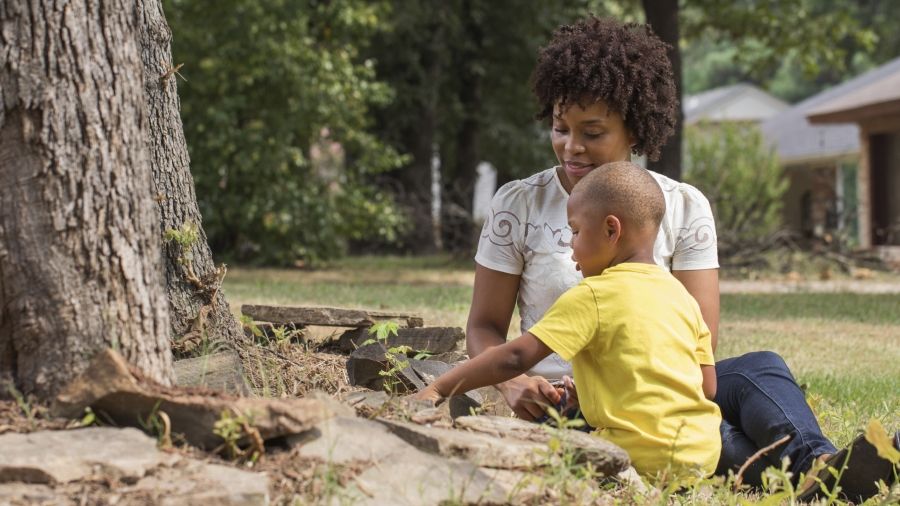
This story is excerpted from A Parent’s Guide to Nature Play: How to Give Your Children More Outdoor Play by Ken Finch, Founder of the Green Hearts Institute for Nature in Childhood.
What are your favorite memories of childhood play?
If you’re like millions of other Americans, most of those memories happened outdoors and included a lot of nature-based play. For instance: digging holes “to China;” catching fireflies and frogs; exploring little creeks and ponds; building stick forts or tree houses; daydreaming in your secret spot; or just “mucking around” in the woods.
Do your own children play that way? Chances are, they don’t. Childhood has changed.
Why Does It Matter?
For countless generations, nature play has been a defining part of childhood. Yet only recently have we begun to grasp its powerful and positive impacts on children’s healthy growth and development.
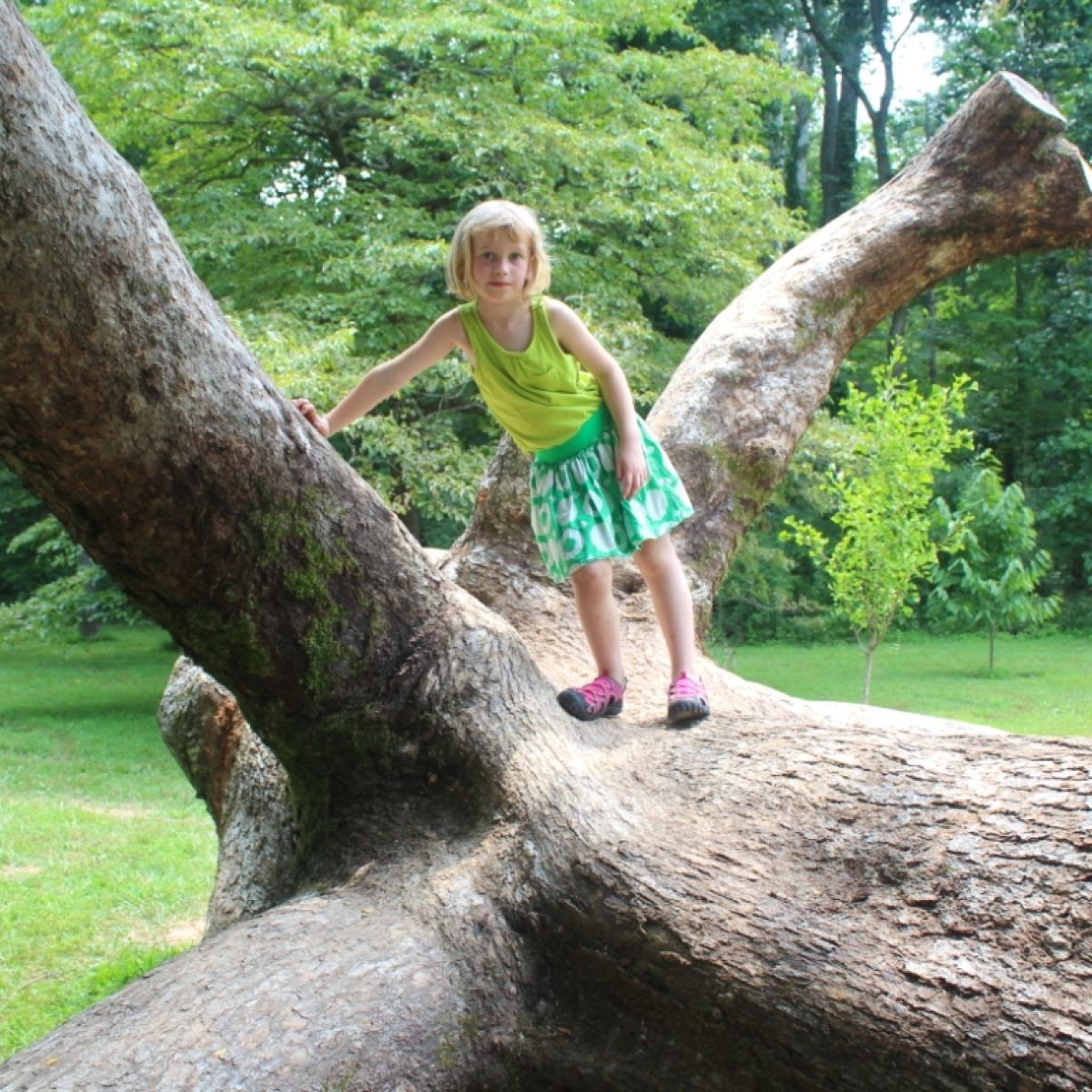
Bernheim Arboretum and Research Forest
- Regular habits of active play during childhood are one of the best predictors of active adulthoods—a perfect prescription for combating the obesity epidemic.
- School children who use playgrounds with trees, fields, shrubs, and vegetated edges show more creative play, better concentration, and more inter-gender play than peers with equipment-focused playgrounds.
- Outdoor play in green settings reduces the symptoms of attention-deficit hyperactivity disorder in children.
- According to the “hygiene hypothesis,” early exposure to plants, animals, and soil helps children’s immune systems to develop properly, making them less vulnerable to allergenic conditions like asthma and peanut allergies.
- Frequent, unstructured childhood play in natural settings has been found to be the most common influence on the development of life-long conservation values.
We have unintentionally removed a life force that has been at the center of children’s physical, social, emotional, creative, and intellectual development throughout the history of humankind.
Three Keys for Great Nature Play
The first step in restoring nature play is to understand it. Green Hearts promotes three vital attributes for the best nature play.
1. The right kind of place
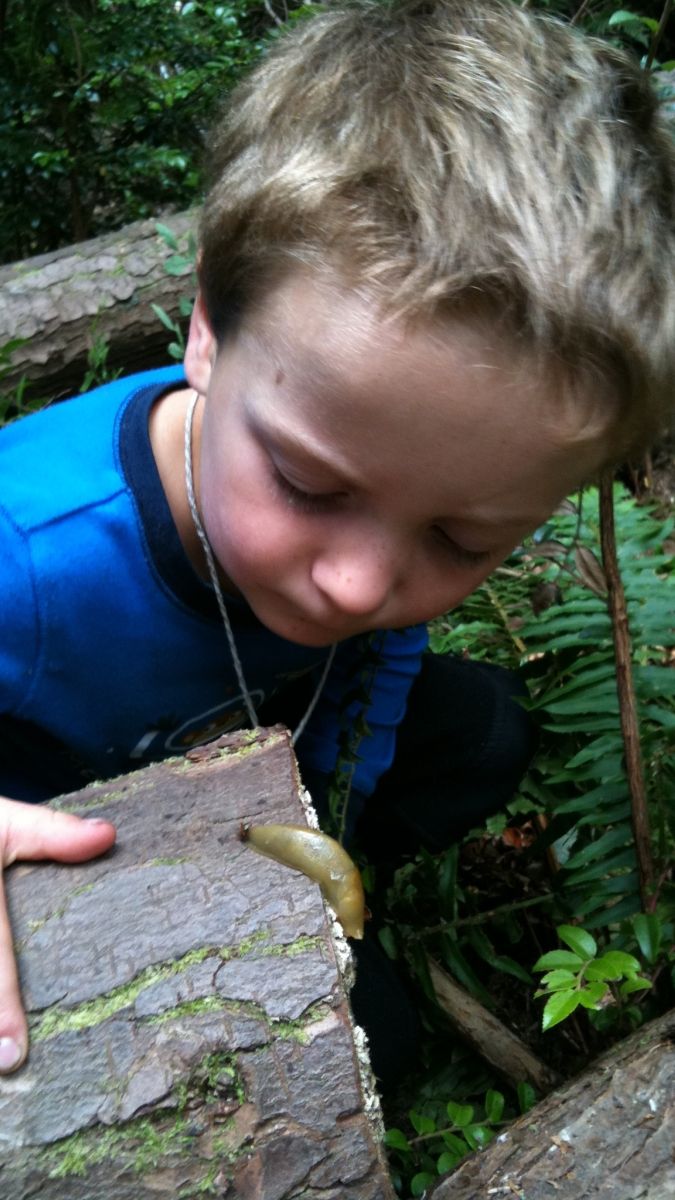
Cedarsong Nature School
Good nature play requires land that is not too protected and is wild—at least in children’s eyes. This might be the “back forty” of their farm, a quiet corner in a local park, a small neighborhood creek or marsh, a vacant city lot, or just their own backyard.
However large or small, the site must have elemental nature to play with and discover: things like rocks, dirt, trees, bugs, flowers, mud, and water. Equally important, kids must be free to dig, collect, climb, build, and hide there. This has been called “rough ground”—patches of land adults don’t much care about, but that kids can love and adopt as their own.
It’s not the size, it’s the freedom!
2. The right kind of play
Outdoor, “child-centered” play is the goal: play that children themselves initiate, guide, change, or abandon. The very best nature play comes from the child, not from the adult!
Ideally, there are no formal objectives and few rules for nature play. It is vital, though, that the play actively engages kids with nature and its elements; it’s not just any play that happens outdoors. Putting your ping-pong table in the backyard is not nature play!
Real nature play is catching tiny critters, collecting leaves and rocks, lying in tall grass, digging for buried treasure, splashing in the creek, hiding amidst the shrubs, and climbing a tree as high as you dare.
It’s about playing with nature, not just in nature!
3. The right kind of re-play
In her research into the origins of personal conservation values, Louise Chawla found, “The special places that stood out in memory, where people formed a first bond with the natural world, were always part of the regular rhythm of life … .” (Italics added). That’s how many of us enjoyed nature play: we played outdoors nearly every day, again and again, in good weather or bad.
This level of frequency may be the hardest aspect of nature play to restore―since, for children, frequency requires proximity. If kids have to be hauled around in the family minivan in order to enjoy nature play, then it’s not likely to happen often enough to fully impact their growth, development, and love of nature.
Instead, we need to bring nature play back into our families’ yards, local green spaces, and school playgrounds—places they can reach on foot or by bicycle, day after day, to play and re-play. “Nearby nature” is the key to restoring frequent nature play!
How Can Parents Restore Nature Play?
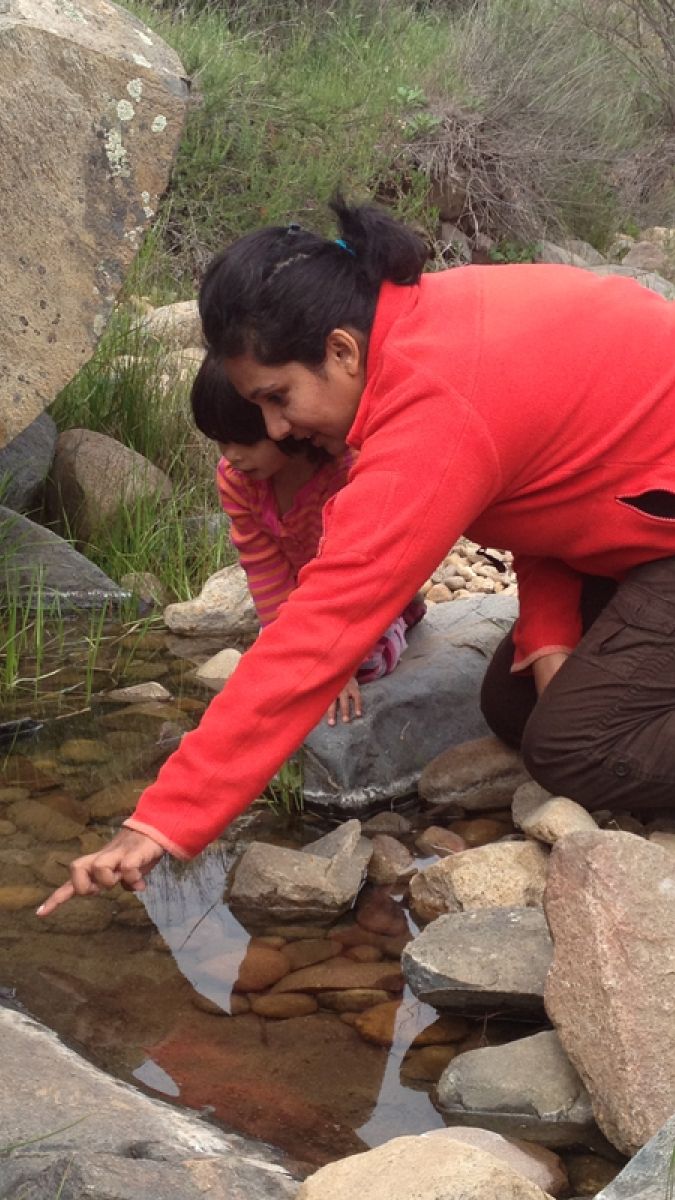
Janice Swaisgood
If you want to give your children the gifts of good health and a life-long love of the outdoors, then bring frequent, unstructured, nature-based play into their lives. It will be the crucial first step in “growing up green!” (See the full A Parent’s Guide to Nature Play for more ideas and resources for getting started.)
Show Your Kids the Door!
As a parent, you are the key to your children’s nature play; you are the “gatekeeper.” It is important that you regularly encourage their outdoor play and “nudge” them outside, away from the common electronic devices that mesmerize so many children.
If they are not used to playing outside, you may quickly hear complaints like, “I’m bored,” and, “There’s nothing to do out here.” Don’t give in! Children have an incredible talent for making up play, but it may take them awhile to get going. You can set an example: be the first one to splash in the mud puddle, roll down the hill, or climb into the tree. They’ll soon get the idea—and then you can withdraw and let your kids play!
“Kidscape” Your Yard
There is no better place to begin restoring frequent nature play than in your own yard, even if it’s a small one. It is handy, familiar, needs no auto transport, and is relatively easy for you to supervise.
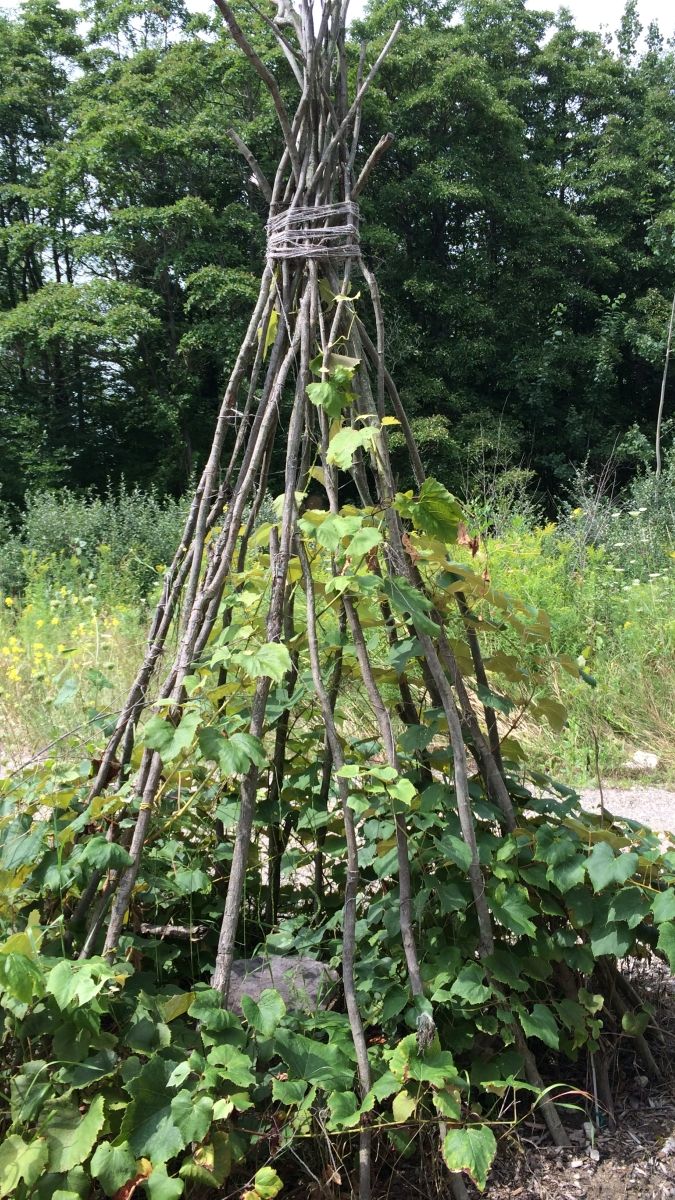
Home yards can provide especially good nature play for young children, about ages two to eight. Their interests will tend to focus on tiny, concrete discoveries rather than the “big picture.” Your yard can provide countless fascinations on that scale, especially if you are willing to make a few changes. Here’s a sampling of not-too-hard and not-too-expensive ideas for this sort of “kidscaping.”
Rough Ground: Set aside part of your backyard for your kids to dig, build, hide, plant, or do whatever they want.
Discovery Board: Lay a piece of scrap plywood, roughly two feet square, in a quiet corner of your yard. Leave it for a few days, and then periodically look to see what’s moved into the micro-habitat beneath it. Likely residents will be pill bugs, ants, slugs, millipedes, and other mini-beasts that kids love. (Note: It’s best to skip this idea if venomous snakes are common in your area.)
Plant Houses: Grow sunflowers in a hollow square, about five or six feet on each side and with a small “door” opening. Alternate seeds for tall and short sunflowers (there are many varieties), so they will grow into solid “walls” and a very unique playhouse! You can also use long garden stakes or bamboo poles to make a teepee frame about six feet high. Plant climbing beans, squash vines, or morning glory vines to grow up and around the poles. By late summer you’ll have a green teepee for your kids’ play!
Play as a Family
Free choice, kids-only outdoor explorations are the “best and highest” form of nature play, but family activities can also add to the fun!
Walk in the Creek: If your yard or neighborhood has a shallow stream, try walking in it. You’ll likely find frogs, water striders, and other insects. Look under creek rocks, too, for weird-looking dragonfly larvae. (Be sure to put the rocks back in the same spots.) Wear old tennis shoes or boots for this excursion.
Play in the Rain: No nearby creek? Then play in the rain on a warm day. Stomp in the mud, slide down a slippery grass slope, catch worms, or just lie down and let the rain fall on your face.
Show and Tell: Encourage your kids to show you what they find outside, and give them a little dedicated space where they can display their treasures (well, at least the non-living ones…).
Keep Nature Play Tools and Toys Handy
Nature itself provides curious children with an endless variety of toys, but there are also human-made devices that can enhance their nature-based play. Here are a few good ones.
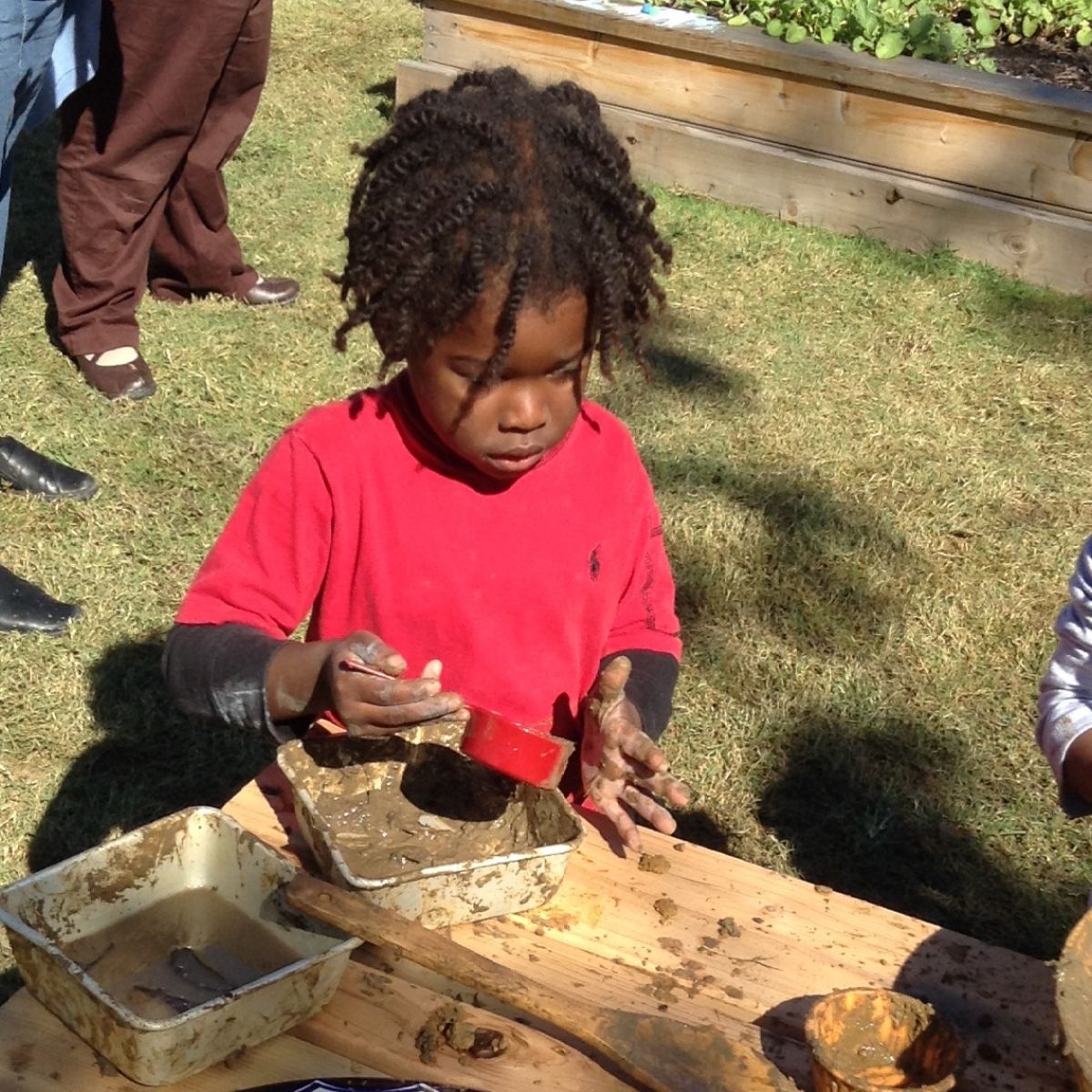
Vogel Alcove
Earth Movers: These are a must, since kids just love to dig in mud, sand, and pea gravel! Supply shovels, spades, rakes, hoes, buckets, plastic barrels, etc.—and get children’s sizes. Keep a child’s wheelbarrow handy, too!
Magnifiers: Look for large ones—at least 3 inches in diameter. Another good option is a magnifier stool: a large magnifier with three wooden legs. Check the internet for these.
Bug Cages: Kids love to capture insects such as fireflies, praying mantises, and butterflies, so keep a small bug cage on hand. Make one using screening and a box, or use a jar with air holes in the lid. Encourage the early and safe release of all captives!
Keep It Safe!
You should always consider safety, of course, but don’t obsess over tiny dangers. The most common cause of children’s accidental death is auto accidents, but you still drive your kids places, don’t you? Do not let equally manageable dangers keep your kids away from nature play. Ultimately, your children must learn to judge risks, gauge their limits, and practice responsibility.
Here are a few tips to keep your children’s nature play safe.
Insects: Have your kids use insect repellent and wear long sleeves, long pants, and shoes; tuck the pant legs into socks to keep out ticks.
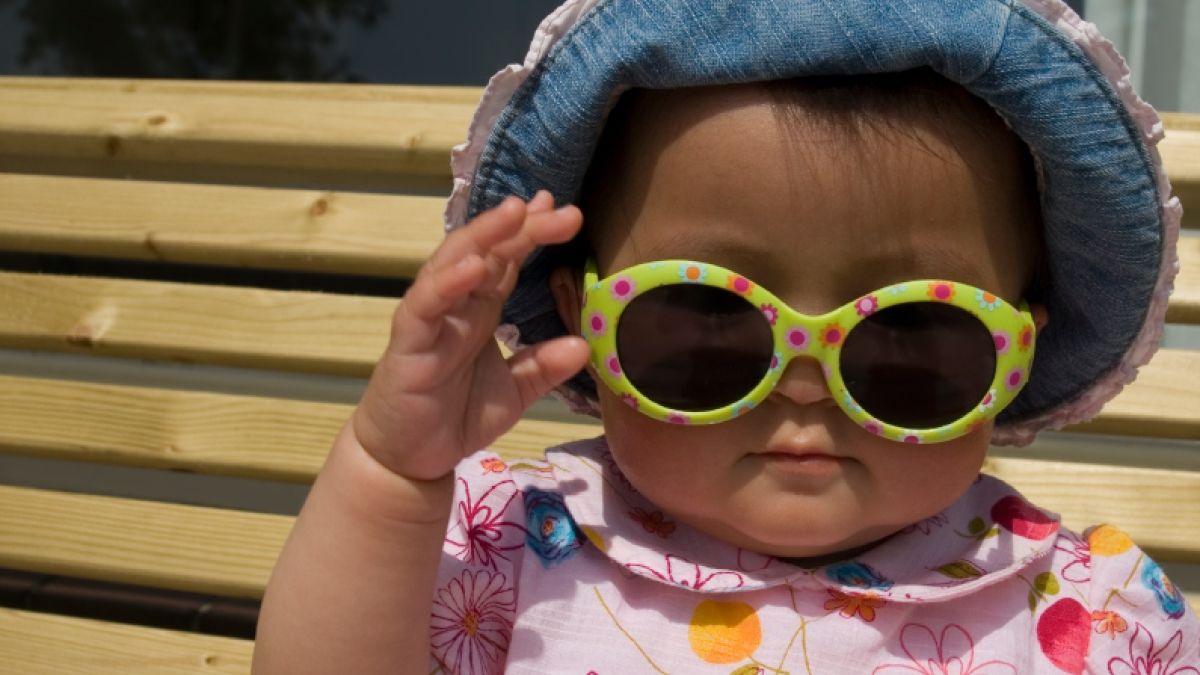
Sunscreen: A little sunshine is good for humans; too much is bad. Routinely put sunscreen on your children, and have them wear comfy hats with brims.
Stranger Danger: All kids should be taught to be cautious with any unknown person, and how to react if attacked. However, crimes against children are no more common than a generation ago, and excessive fear is uncalled for unless there have been crimes against kids in your neighborhood. Playing outside with friends, either at or very near to home, will remove most of the danger.
Spread the Word!
Societal understanding of the importance of nature-based play is growing, but many parents are still unaware. You can help them understand by bringing the message to PTA meetings, book clubs, local school boards, park districts, and other community groups that share a concern for children.
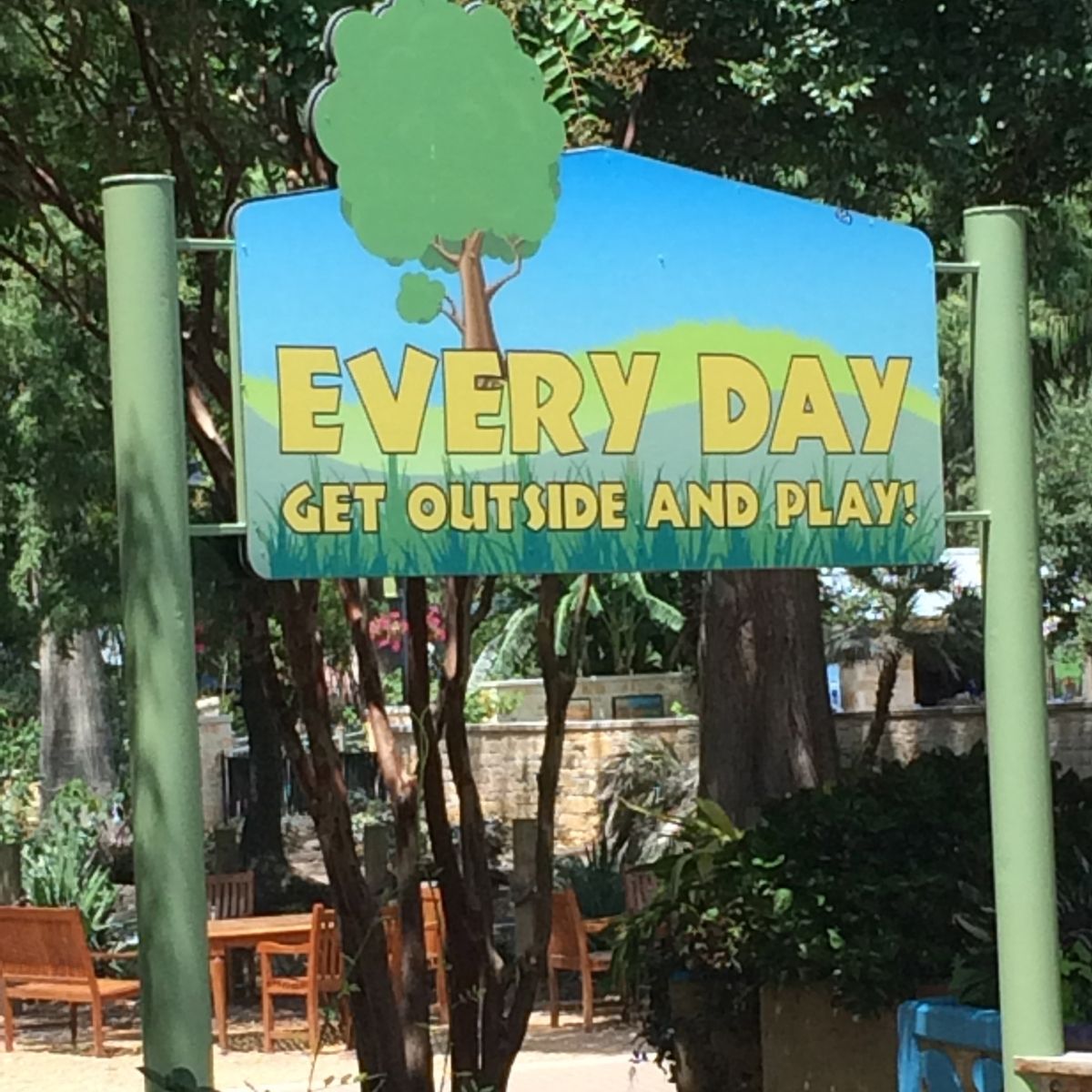
San Antonio Zoo
Restoring nature play for your own children, in your own yard, is the perfect first step. Then, after you see how well that works, consider extending your commitment to a “larger stage.” Could your elementary school create a nature play area on its playground and have it open to the whole community on evenings and weekends? Have nearby parks opened areas for active nature play, with relaxed rules? Does your neighborhood have a piece of rough ground that could be enhanced for nature play?
Any place where children regularly play is a potential site for the restoration of nature play―but that potential will only be realized through the efforts of caring parents like you!
About the Author
Ken Finch is the founder of the Green Hearts Institute for Nature in Childhood. From 2005 until its recent closure, Green Hearts served as a passionate advocate for nature-based play for children. Ken has delivered hundreds of keynote and workshop presentations; written diverse and popular publications that continue to be in demand; and offered extensive advice, teaching, and consulting for a wide range of allied groups. Ken is now entering what he calls “semi-retirement,” but will continue with a reduced schedule of speaking, writing, and consulting. He can best be reached at [email protected].